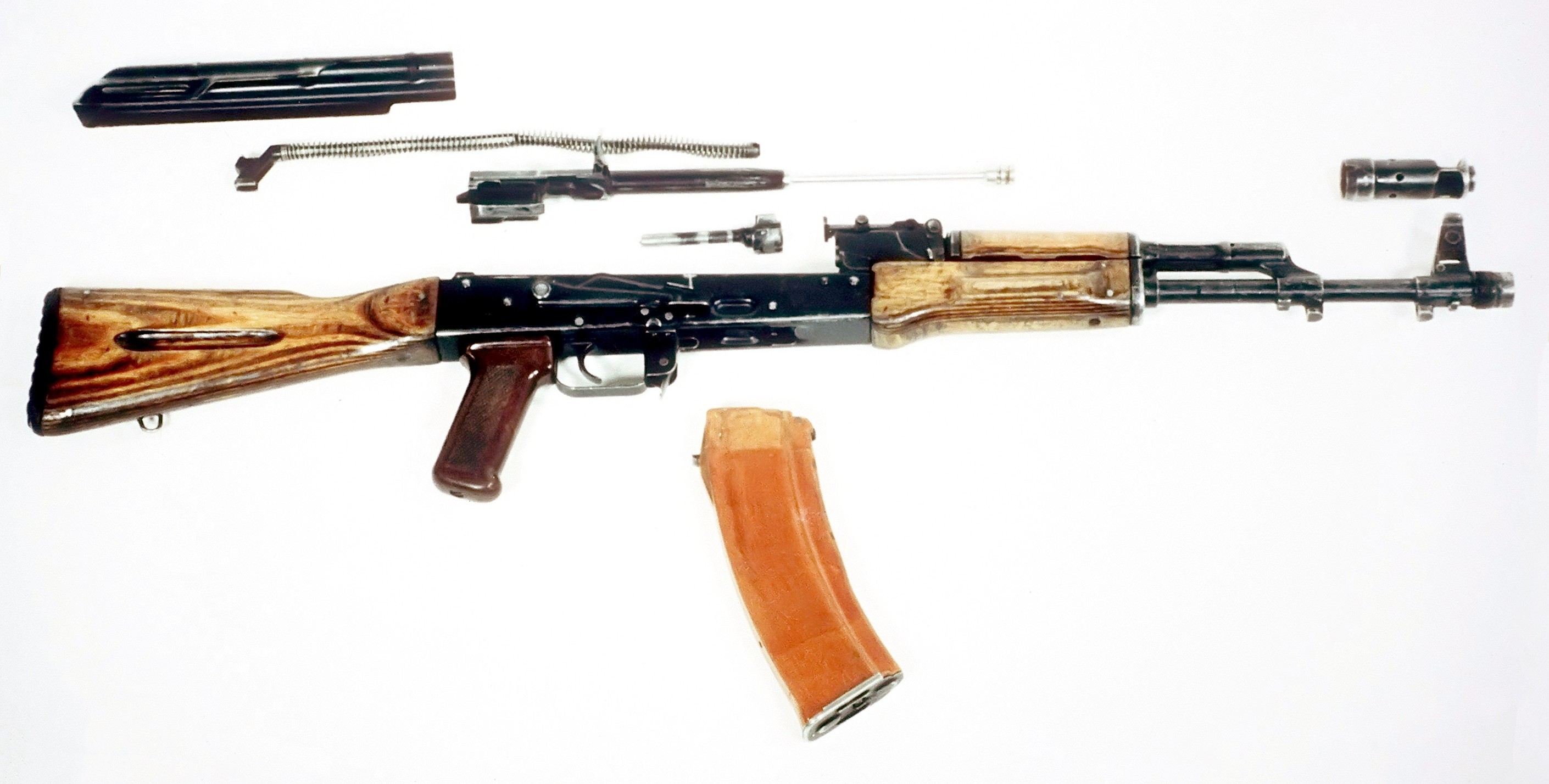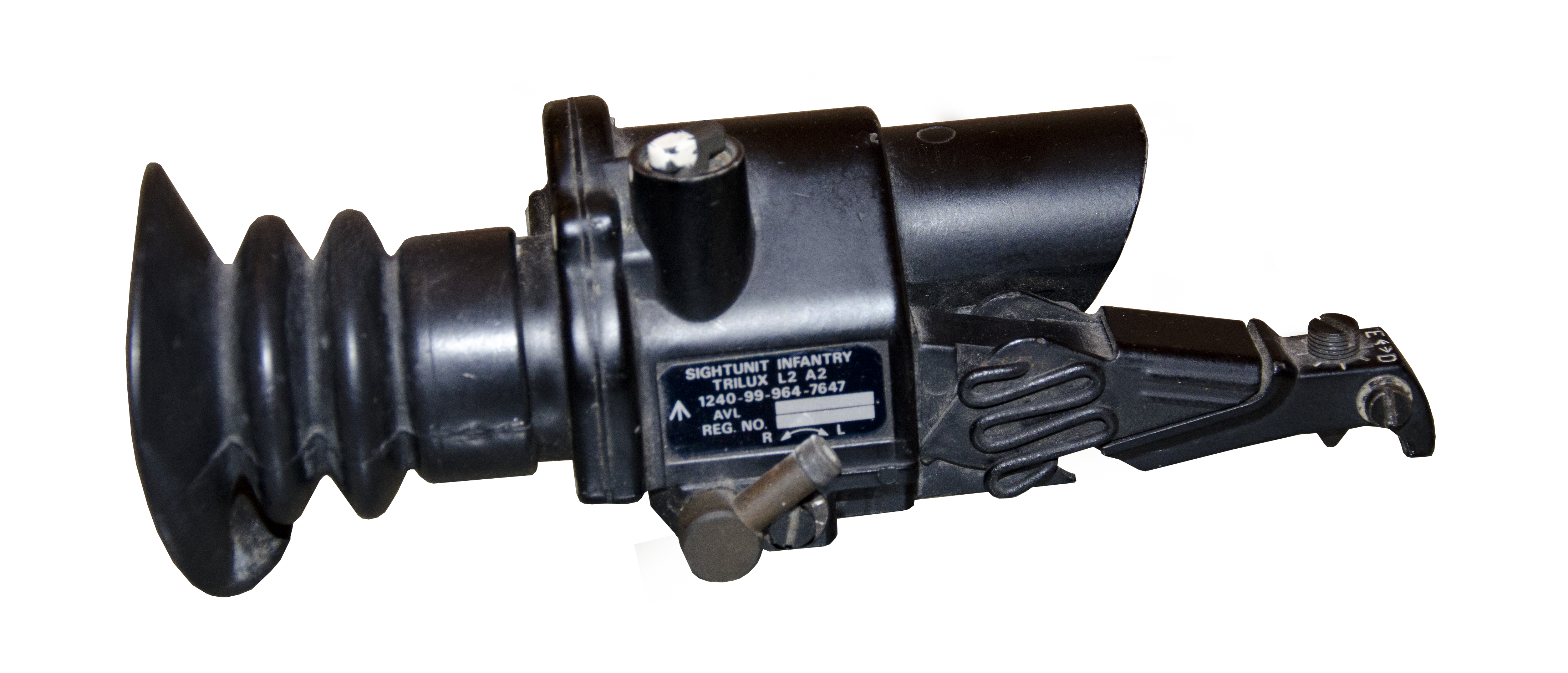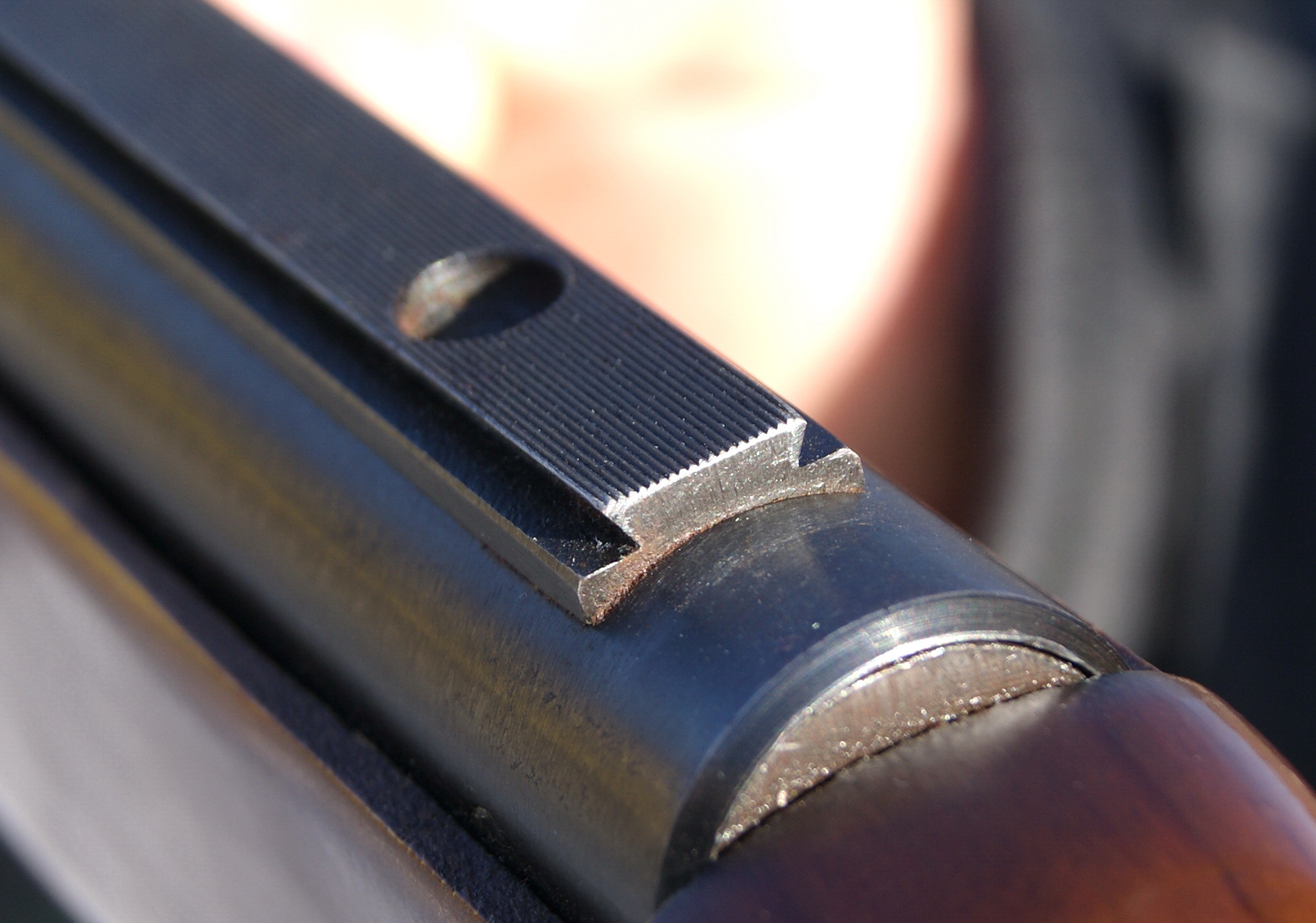|
USP-1
The USP-1 "Tyul'pan" (From Russian: Унифицированный Стрелковый Прицел, первый образец, Unifitsirovannyj Strelkovyj Pritsel, pervyj obrazets, "Unified Firearm Sight, first model, GRAU index 1P29) is a Soviet/Russian universal optic sight, designed for use on the AK rifle family ( AKMN, AK-74N, AK-74M, AK-101, AK-102, AK-105), the RPK-74N, the PKMN and the PKP "Pecheneg" and is designed for quick-mounting and quick-detaching. Compared with an open mechanical sight, the effectiveness of firing at targets is increased 1.2 to 2 times, and the time taken to conduct a firing session is reduced by 60%. It is designed by TsKB "Tochpribor" in Novosibirsk. Production is conducted in Novosibirsk instrument manufacturing factory (NPZ). Design The sight possesses a mechanism for adjustments and a stadiametric rangefinder. No batteries are required in the sight. The optic scheme of the sight is a prismatic wrapping. It is easily mounted on the w ... [...More Info...] [...Related Items...] OR: [Wikipedia] [Google] [Baidu] |
AK-74
The AK-74 (Russian: , tr. ''Avtomat Kalashnikova obraztsa 1974 goda'', lit. 'Kalashnikov assault rifle model 1974) is an assault rifle designed by small arms designer Mikhail Kalashnikov in 1974. While primarily associated with the Soviet Union, it has been used by multiple states throughout the 20th century and onwards. It is chambered for the 5.45×39mm cartridge, which replaced the 7.62×39mm cartridge of Kalashnikov's earlier automatic weapons for the Soviet armed forces. The rifle first saw service with Soviet forces in the Afghanistan conflict from 1979 onwards. The head of the Afghan bureau of the Inter-Services Intelligence (ISI), the intelligence agency of Pakistan, claimed that America's Central Intelligence Agency (CIA) paid $5,000 for the first AK-74 captured by the Afghan mujahideen during the Afghan-Soviet War. , most countries of the former Soviet Union use the rifle. Licensed copies were produced in Bulgaria (AK-74, AKS-74 and AKS-74U), and in the former ... [...More Info...] [...Related Items...] OR: [Wikipedia] [Google] [Baidu] |
Russian Language
Russian (russian: русский язык, russkij jazyk, link=no, ) is an East Slavic languages, East Slavic language mainly spoken in Russia. It is the First language, native language of the Russians, and belongs to the Indo-European languages, Indo-European language family. It is one of four living East Slavic languages, and is also a part of the larger Balto-Slavic languages. Besides Russia itself, Russian is an official language in Belarus, Kazakhstan, and Kyrgyzstan, and is used widely as a lingua franca throughout Ukraine, the Caucasus, Central Asia, and to some extent in the Baltic states. It was the De facto#National languages, ''de facto'' language of the former Soviet Union,1977 Soviet Constitution, Constitution and Fundamental Law of the Union of Soviet Socialist Republics, 1977: Section II, Chapter 6, Article 36 and continues to be used in public life with varying proficiency in all of the post-Soviet states. Russian has over 258 million total speakers worldwide. ... [...More Info...] [...Related Items...] OR: [Wikipedia] [Google] [Baidu] |
Annexation Of Crimea By The Russian Federation
In February and March 2014, Russia invaded and subsequently annexed the Crimean Peninsula from Ukraine. This event took place in the aftermath of the Revolution of Dignity and is part of the wider Russo-Ukrainian War. The events in Kyiv that ousted Ukrainian president Viktor Yanukovych on 22 February 2014 sparked pro-Russian demonstrations as of 23 February against the (prospected) new Ukrainian government. At the same time Russian president Vladimir Putin discussed Ukrainian events with security service chiefs remarking that "we must start working on returning Crimea to Russia". On 27 February, Russian troops captured strategic sites across Crimea, followed by the installation of the pro-Russian Aksyonov government in Crimea, the Crimean status referendum and the declaration of Crimea's independence on 16 March 2014. Although Russia initially claimed their military was not involved in the events, Putin later admitted that troops were deployed to "stand behind Crimea's ... [...More Info...] [...Related Items...] OR: [Wikipedia] [Google] [Baidu] |
Degree (angle)
A degree (in full, a degree of arc, arc degree, or arcdegree), usually denoted by ° (the degree symbol), is a measurement of a plane (mathematics), plane angle in which one Turn (geometry), full rotation is 360 degrees. It is not an SI unit—the SI unit of angular measure is the radian—but it is mentioned in the SI Brochure, SI brochure as an Non-SI units mentioned in the SI, accepted unit. Because a full rotation equals 2 radians, one degree is equivalent to radians. History The original motivation for choosing the degree as a unit of rotations and angles is unknown. One theory states that it is related to the fact that 360 is approximately the number of days in a year. Ancient astronomers noticed that the sun, which follows through the ecliptic path over the course of the year, seems to advance in its path by approximately one degree each day. Some ancient calendars, such as the Iranian calendar, Persian calendar and the Babylonian calendar, used 360 days for a year. ... [...More Info...] [...Related Items...] OR: [Wikipedia] [Google] [Baidu] |
Field Of View
The field of view (FoV) is the extent of the observable world that is seen at any given moment. In the case of optical instruments or sensors it is a solid angle through which a detector is sensitive to electromagnetic radiation. Humans and animals In the context of human and primate vision, the term "field of view" is typically only used in the sense of a restriction to what is visible by external apparatus, like when wearing spectacles or virtual reality goggles. Note that eye movements are allowed in the definition but do not change the field of view when understood this way. If the analogy of the eye's retina working as a sensor is drawn upon, the corresponding concept in human (and much of animal vision) is the visual field. It is defined as "the number of degrees of visual angle during stable fixation of the eyes".Strasburger, Hans; Pöppel, Ernst (2002). Visual Field. In G. Adelman & B.H. Smith (Eds): ''Encyclopedia of Neuroscience''; 3rd edition, on CD-ROM. El ... [...More Info...] [...Related Items...] OR: [Wikipedia] [Google] [Baidu] |
Magnification
Magnification is the process of enlarging the apparent size, not physical size, of something. This enlargement is quantified by a calculated number also called "magnification". When this number is less than one, it refers to a reduction in size, sometimes called ''minification'' or ''de-magnification''. Typically, magnification is related to scaling up visuals or images to be able to see more detail, increasing resolution, using microscope, printing techniques, or digital processing. In all cases, the magnification of the image does not change the perspective of the image. Examples of magnification Some optical instruments provide visual aid by magnifying small or distant subjects. * A magnifying glass, which uses a positive (convex) lens to make things look bigger by allowing the user to hold them closer to their eye. * A telescope, which uses its large objective lens or primary mirror to create an image of a distant object and then allows the user to examine the image clo ... [...More Info...] [...Related Items...] OR: [Wikipedia] [Google] [Baidu] |
SUIT (sight)
The SUIT sight is a 4× telescopic sight with tritium-powered illumination, utilised at dusk or dawn. The full name is the L2A2 Sight Unit Infantry Trilux. The sight is not designed as a sniper sight, but as a standard issue infantry sight to improve the infantryman's night fighting capability and to assist target identification at long range in daylight and in poor light conditions. The sight was mounted on the L1A1 Self-Loading Rifle or GPMG. It was first produced in 1976 by Avimo Ltd. in London, England. Use The sight is an optional optical sighting system for the British Army's L1A1 Self-Loading Rifle and was also used by the Australians and New Zealanders. The sight has a lever to change between a short range mode (300 meters) and a long range mode (500 meters). A similar unit known as the SUSAT was fitted to the SA80 series weapons. Reticle The reticle of the SUIT sight is of unusual design. Unlike the traditional crosshair layouts commonly used, which are in essence a ... [...More Info...] [...Related Items...] OR: [Wikipedia] [Google] [Baidu] |
Warsaw Pact Rail
A dovetail rail or dovetail mount can refer to several types of sliding rail system found on firearms primarily for mounting telescopic sights. Colloquially, the term ''dovetail rail'' usually refer to any straight mounting bracket with an inverted trapezoid (dovetail) cross-section (though the hexagonal-profiled Weaver rail and Picatinny rail are also derivative dovetail designs) running parallel to the bore for mounting a scope or diopter sight to a rifle. These are sometimes also called "tip-off" mounts, and allow the user to easily take on or off the sight. ''Dovetail mount'' can also refer to a dovetail track running perpendicular to the bore (see "Other uses" below). Dovetail rails for rifles Dovetails come in several different types and sizes depending on manufacturer, but the most common are the 11 mm and inch (9.5 mm). Some other less known, but currently commercially available dovetail mounts, are 12, 13, 13.5, 14, 14.5, 16, 16.5, 17 and 19 mm, a ... [...More Info...] [...Related Items...] OR: [Wikipedia] [Google] [Baidu] |
Algerian Civil War
The Algerian Civil War ( ar, rtl=yes, الْحَرْبُ الْأَهْلِيَّةُ الجَزَائِرِيَّةُ, al-Ḥarb al-ʾAhlīyah al-Jazāʾirīyah) was a civil war in Algeria fought between the Algerian government and various Islamist rebel groups from 26 December 1991 (following a coup negating an Islamist electoral victory) to 8 February 2002. The war began slowly, as it initially appeared the government had successfully crushed the Islamist movement, but armed groups emerged to declare jihad and by 1994, violence had reached such a level that it appeared the government might not be able to withstand it. By 1996–97, it had become clear that the Islamist resistance had lost its popular support, although fighting continued for several years after. Kepel, ''Jihad'', 2002: p.255 The war has been referred to as 'the dirty war' (''la sale guerre''), and saw extreme violence and brutality used against civilians. Kepel, ''Jihad'', 2002: p.254 Islamists targeted jo ... [...More Info...] [...Related Items...] OR: [Wikipedia] [Google] [Baidu] |
Chechen–Russian Conflict
The Chechen–Russian conflict (russian: Чеченский конфликт, ''Chechenskiy konflikt''; ce, Нохчийн-Оьрсийн дов, ''Noxçiyn-Örsiyn dov'') was the centuries-long conflict, often armed, between the Russian (formerly Soviet) government and various Chechen forces. The recent phase of the conflict started after the disintegration of the Soviet Union in 1991 and lasted until 2017. Formal hostilities in Chechen date back to 1785, though elements of the conflict can be traced back considerably further. The Russian Empire initially had little interest in the North Caucasus itself other than as a communication route to its ally the Kingdom of Kartli-Kakheti (eastern Georgia) and its enemies, the Persian and Ottoman Empires, but growing tensions triggered by Russian activities in the region resulted in an uprising of Chechens against the Russian presence in 1785, followed by further clashes and the outbreak of the Caucasian War in 1817. Russia officiall ... [...More Info...] [...Related Items...] OR: [Wikipedia] [Google] [Baidu] |
AN-94
The AN-94 (Russian: 5,45-мм автомат Никонова обр. 1987 г. / АН-94 «Абака́н», GRAU designation 6P33) is a Russian assault rifle. The initials stand for ''Avtomat Nikonova'' model of 1994, after its chief designer Gennadiy Nikonov, who previously worked on the Nikonov machine gun. The AN-94 was designed as a potential replacement to the AK-74 series of rifles currently in service with the Russian Armed Forces. Due to its complex design and expense, it failed to fill its intended role as a replacement for the AK-74, but it is in limited use as a special purpose weapon. The AN-94 has the unique feature of delaying felt recoil for the first two rounds. This, it is claimed, increases hit probability under the most adverse combat conditions. The AN-94 offers a unique two-shot burst function at a stated 1800 rounds per minute. Design and operation The most conspicuous identifying feature of the AN-94 is its magazine which is canted several degrees ... [...More Info...] [...Related Items...] OR: [Wikipedia] [Google] [Baidu] |
GRAU
The Main Missile and Artillery Directorate of the Ministry of Defense of the Russian Federation (), commonly referred to by its transliterated Russian acronym GRAU (), is a department of the Russian Ministry of Defense. It is subordinate to the Chief of Armament and Munition of the Russian Armed Forces, a vice-minister of defense. The organization dates back to 1862 when it was established under the name Главное артиллерийское управление (ГАУ – GAU). The "R" from "rockets" was added to the title in 1960. In particular, the GRAU is responsible for assigning GRAU indices to Russian army munitions and equipment. Arsenals of the GRAU, according to Kommersant-Vlast in 2005, include the 60th at Kaluga, the 55th at Rzhev, the 75th at Serpukhov south of Moscow, (all three in the Moscow Military District) and the 80th at Gagarskiy, the 116th at Krasno-Oktyabrskiy and the 5th, all in the Volga–Urals Military District.Kommersant-Vlast, Vys Rossik ... [...More Info...] [...Related Items...] OR: [Wikipedia] [Google] [Baidu] |





